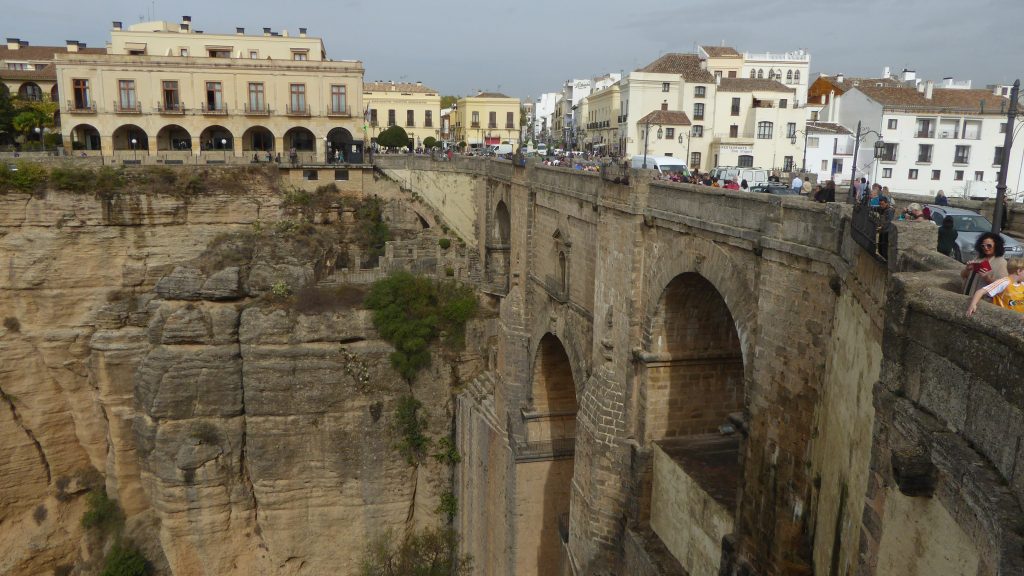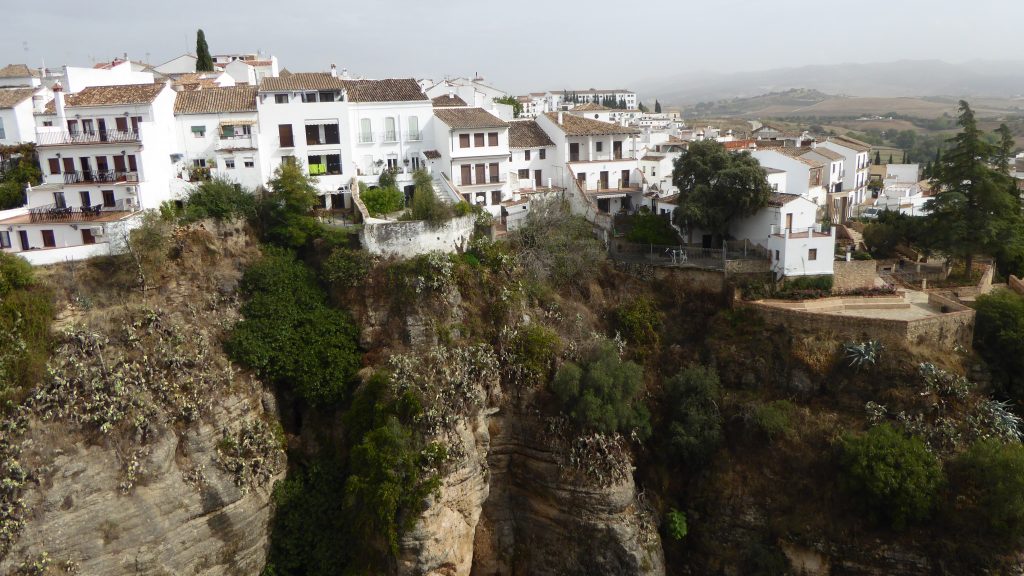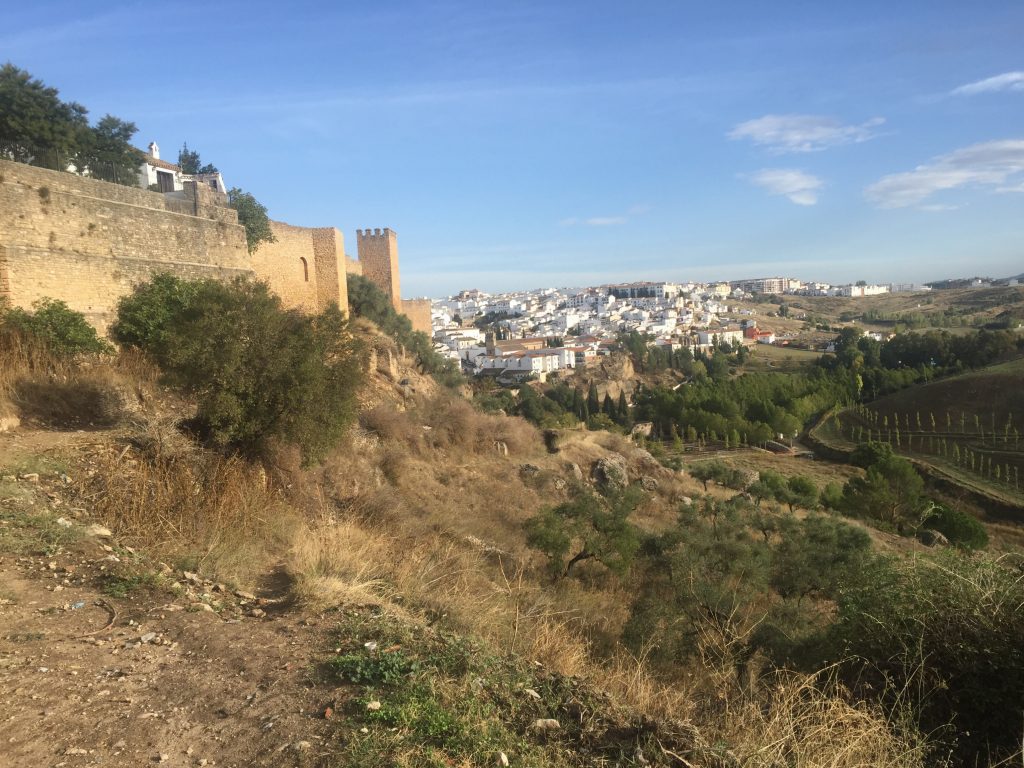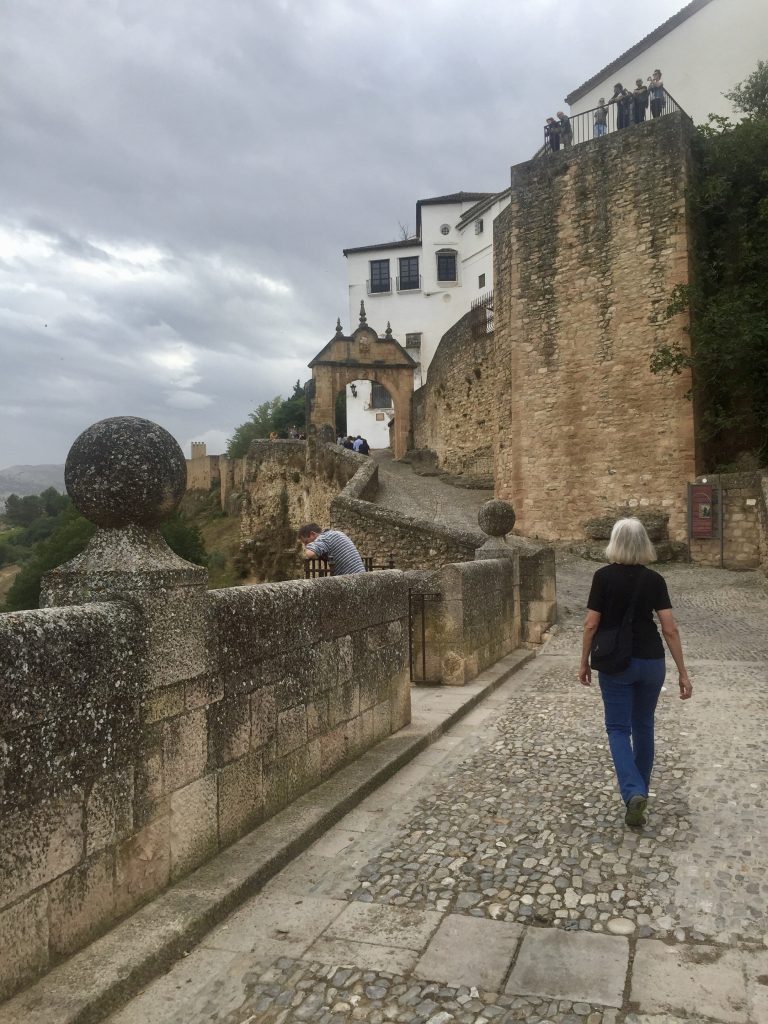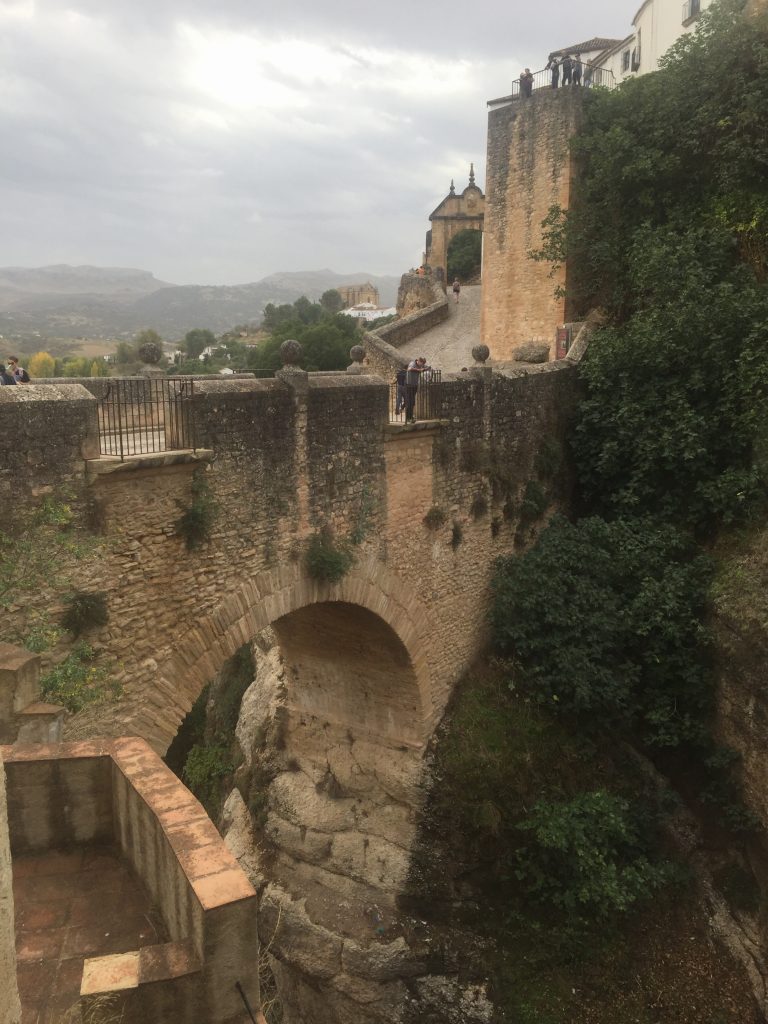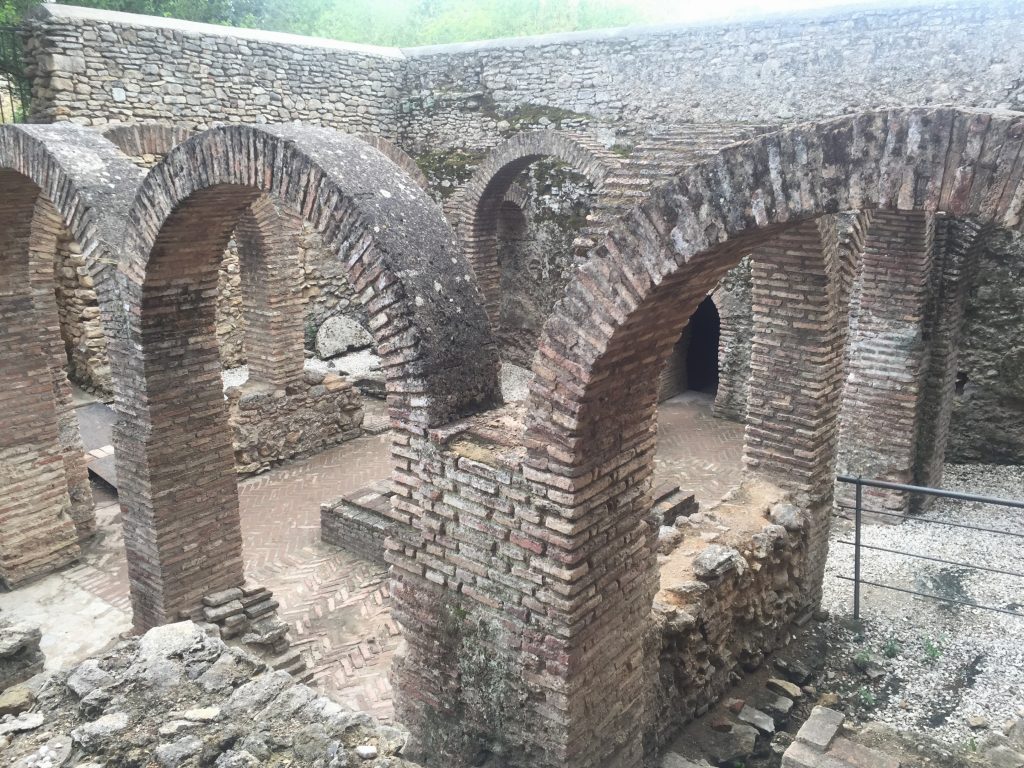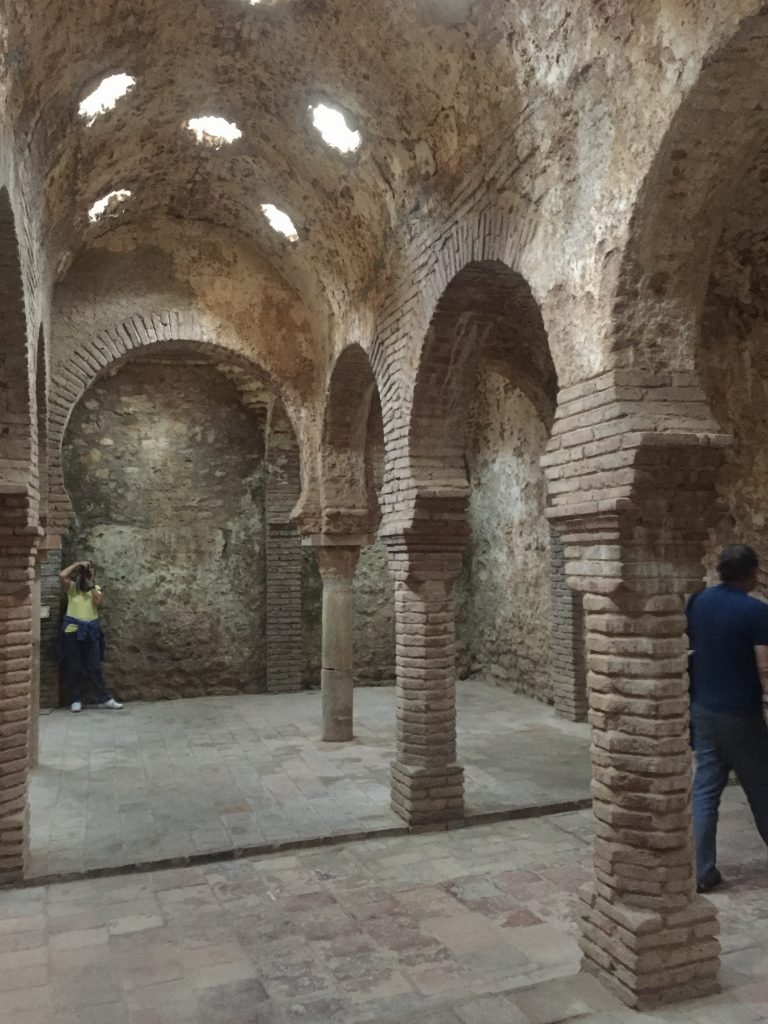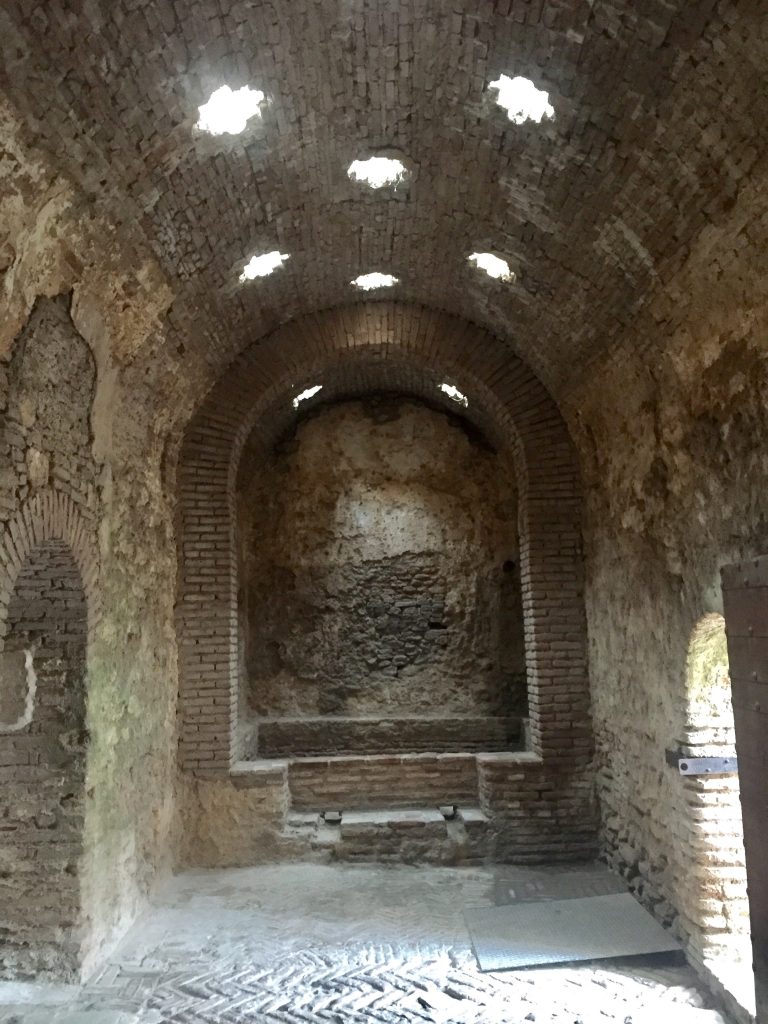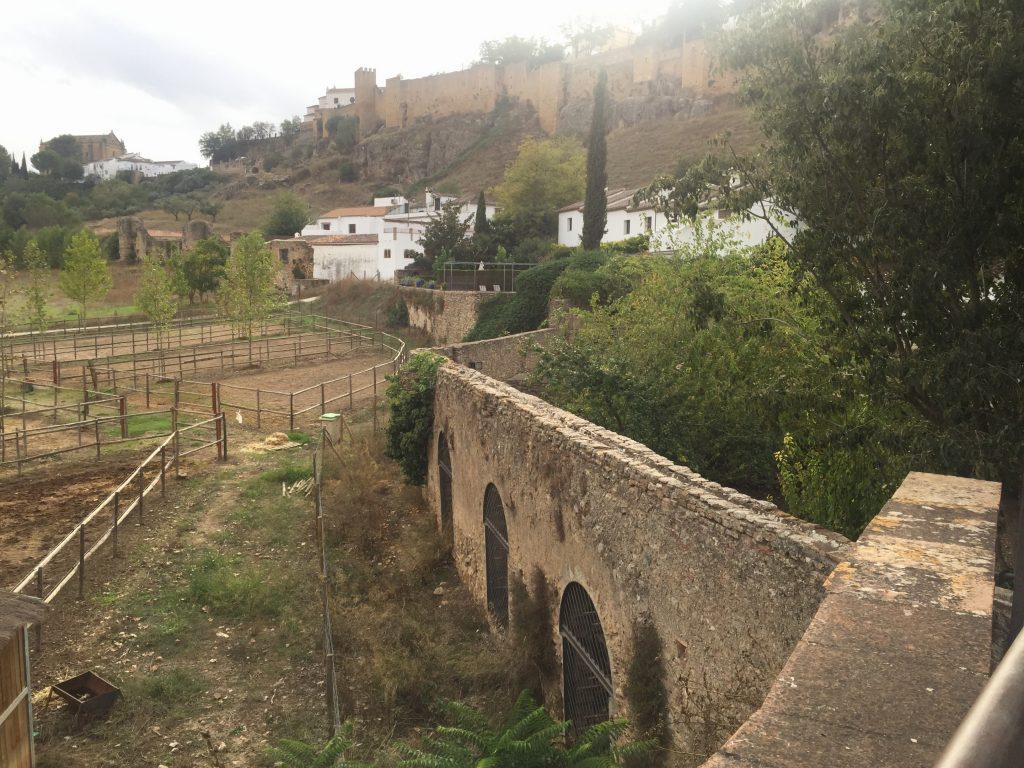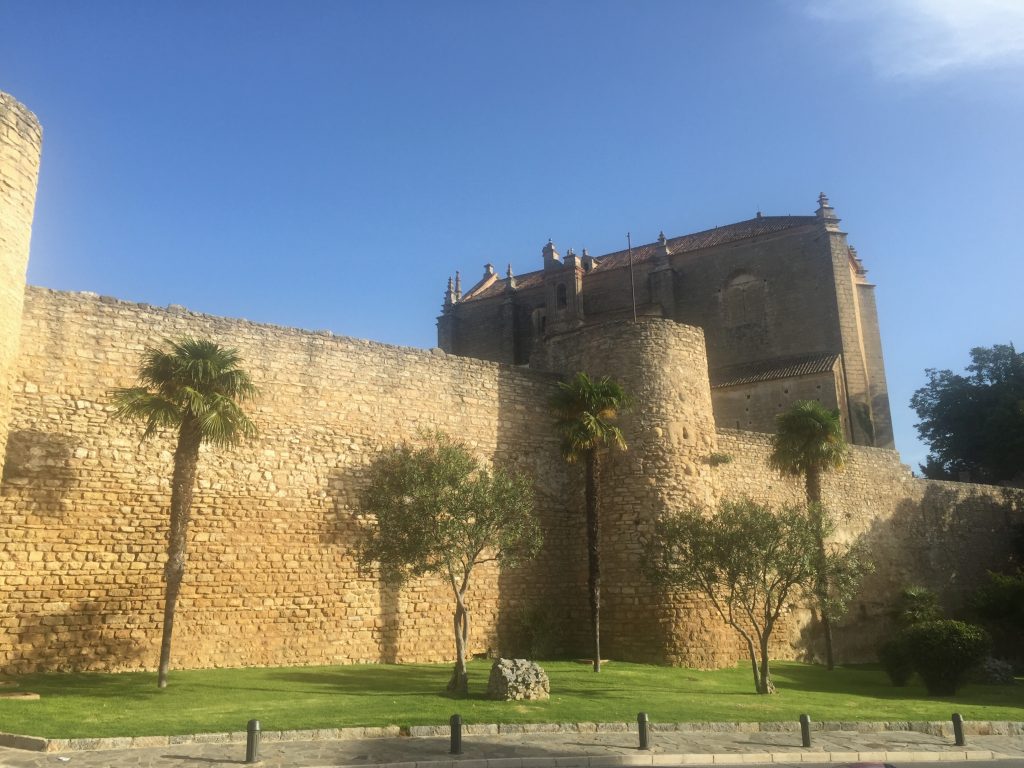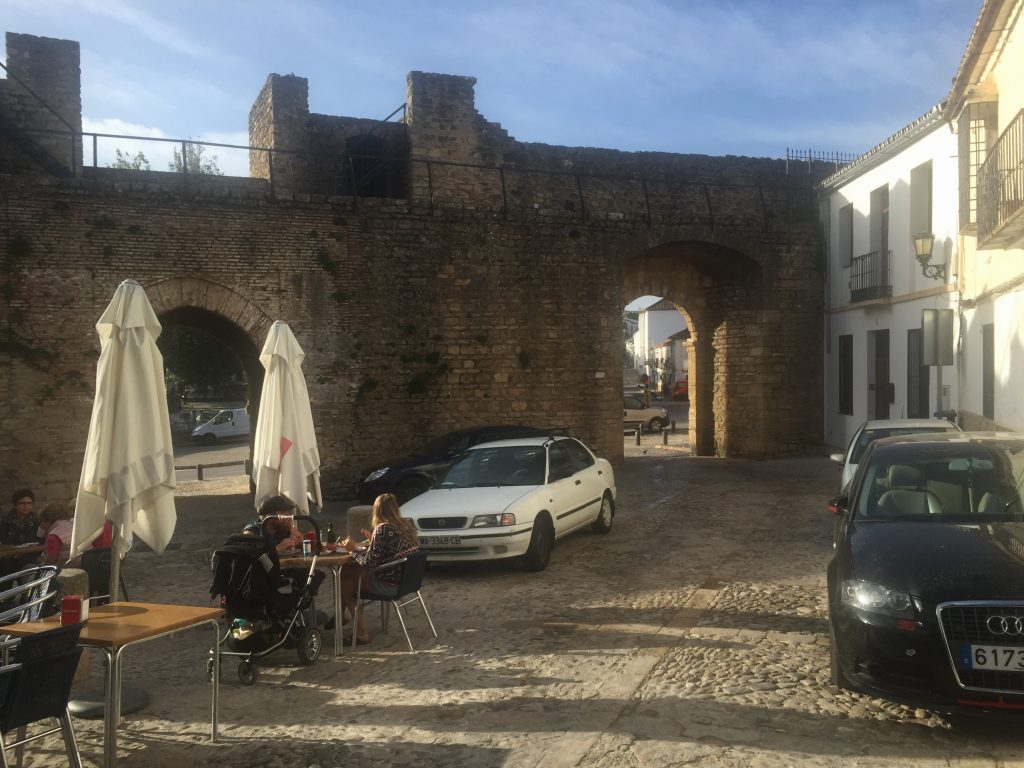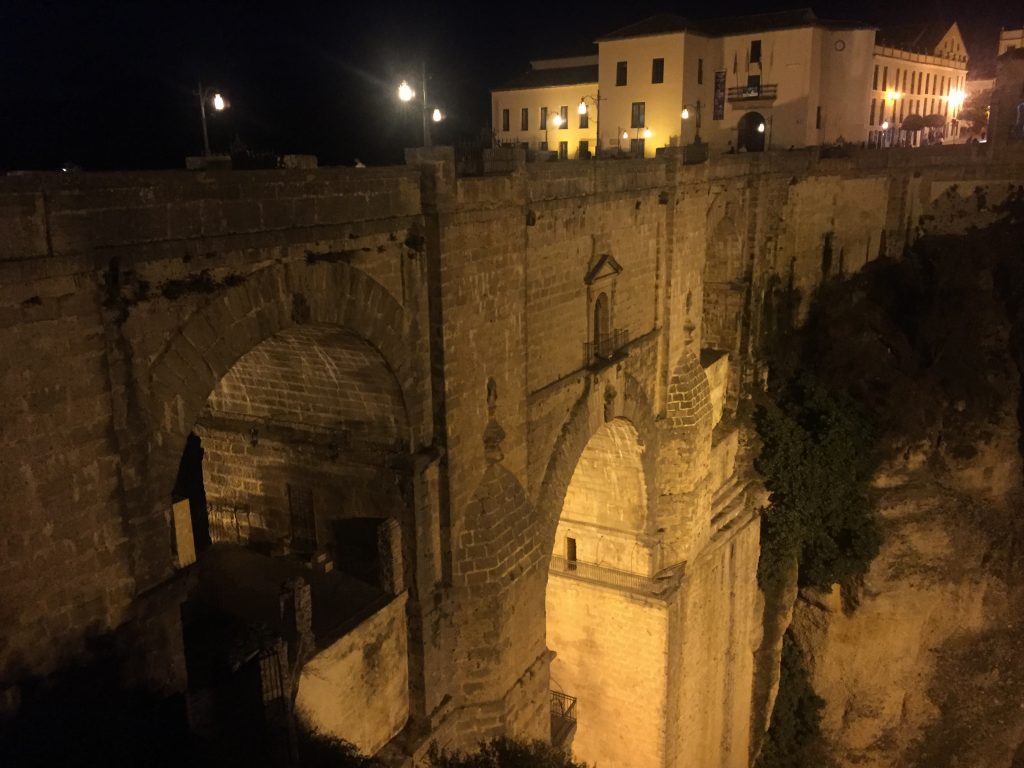Help Me Ronda
The attraction of Ronda is…Ronda. Situated in the hills/mountains north of Malaga and partway between Seville and Granada, it’s one of the oldest towns in all of Spain and considered the prettiest of the pueblos blancos, towns built into the sides of hills and painted predominantly white. Ronda has been a Celtic town (that was a surprise to me), a Roman stronghold, a Byzantine Greek settlement, and a Moorish town until it fell to the Christians during the Reconquering in the 1200s. Oh–somewhere along the line it was also pillaged by the Visigoths.
Ronda has been coveted as a town site from the earliest times because it is situated atop a hill with 300 foot vertical walls and therefore easily defensible. (That is called into question considering the number of times it has changed hands.) That’s the old town. Ronda expanded across the gorge and now has three bridges built at various times in its history. The largest and most heavily used is the Puente Nueve, because anything built around here in the 1700s is considered new. Elements of earlier walls and fortifications are evident and accessible in many places around the town–in many cases, incorporated into newer structures. (How cool would it be to have a Roman wall in your living room?) The Moors, feeling that anyone entering the town needed to purify themselves first, built an extensive bath system at the main entrance to the town, complete with heated water delivered via aqueduct to the complex by a horse powered water wheel and heated with a wood fire. The remains, below, are fascinating.
Ronda is now heavily invested in tourism. It claims to be the most visited town in Spain. The architecture and history are fascinating, and I’d recommend a visit for those reasons. But maybe not a long one, unless you like crowds. Fortunately, the Baños Arabes are down a pretty steep hill, so crowds thin out pretty quickly, and nights seem to be less crowded.
